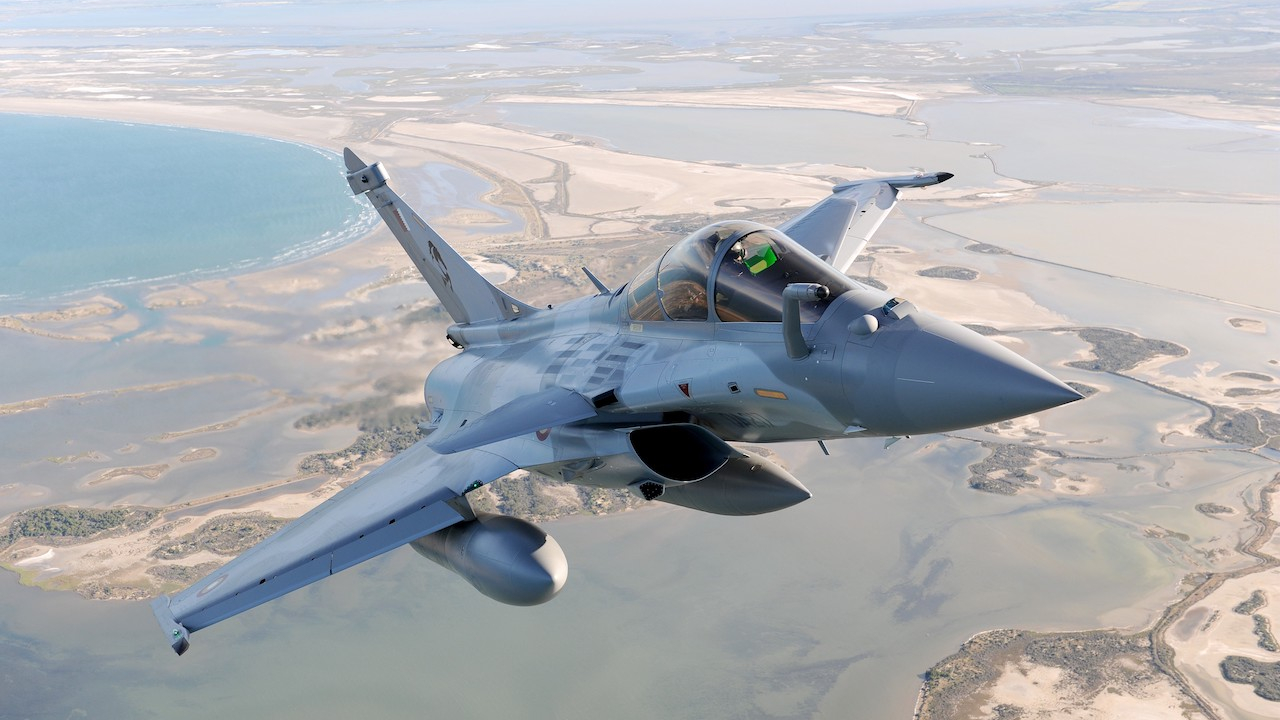Boeing targets AH-6i at Middle Eastern market

Fred Jernigan, Boeing’s AH-6 international capture team leader told Arabian Aerospace that the AH-6i was the next generation “Little Bird”.
He said: “The US special ops guys picked this aircraft – this is combat proven. We looked at the international market and assessed what was needed. This gives AH-64 Apache capabilities, but is down the scales of affordability from the Apache (which is a high end, heavy attack helicopter) smaller in size and lower cost. But not everybody needs an Apache. We have removed obsolescence and improved performance, yet we have not started anew from the ground up – thereby avoiding the cost of an all-new development programme.”
Launched with internal company funding, design of the AH-6i began in February 2009 and the prototype made its maiden flight on September 16. The AH-6i was thus designed and built in just seven months and it uses COTS avionics, apart from the mission computer and weapons controller, thereby avoiding the ‘drag’ of external development programmes. It also borrows heavily from the US Army version. As a result Jernigan said: “We can deliver operationally useable aircraft in 21 months, period, no caveats.”
The aircraft can hover out of ground effect at 6,000ft even on a 35° C (95° F) day, and despite its compact dimensions is fitted with a 3,000-lb capacity hook, used for underslung loads of up to 2,000-lb.
The new variant uses the same C30R engine and transmission as the US Special Forces A/MH-6M Mission Enhanced Little Bird, and has the same 4,700-lb maximum take-off weight, giving plenty of excess power and payload even with full internal fuel and four Hellfire missiles.
Like the US Army version, the AH-6i can be fitted with a weapons plank for mounting weapons, or a utility plank allowing external carriage of passengers or snipers. It is being offered with a wide range of offensive weapons, including laser-guided Hellfire ASMs, and the laser-guided DAGR rocket, which gives similar accuracy and effect, albeit at shorter range, as well as 0.50-in or 7.62-mm machine guns.
Despite the obvious similarities, Boeing avoids comparing the AH-6i with the US Army A/MH-6M, as Jernigan, explained: “Boeing would not say so. The US Government does not like such comparisons to existing Special Forces equipment.”
Al Winn, Boeing’s Apache programs vice president did admit that the A/MH-6M was the ‘base aircraft’ and pointed out that this allowed Boeing to take advantage of the same airworthiness release and weapons installation and clearances, but stressed that it had “different equipment and a different sensor”. He also revealed that the AH-6i had a new main rotor blade with a tapered tip and a new tail rotor, giving enhanced performance and reduced control loads.
The aircraft has an all-glass cockpit with a single analogue back-up flight instrument. It uses Block III Apache software and, as a result, the display symbology would be immediately familiar to any AH-64 Apache pilot.
The MX-15Di sensor turret accounts for about ten per cent of the aircraft cost and is a five-axis stabilized sensor ball with electro-optical infrared (EO and IR) sensors and a laser designator and spot tracker. It reportedly started life as a movie camera mount – and is stable enough to achieve very high-resolution imagery.
A tactical common data link (TCDL) is fitted to allow the streaming of video or data from the aircraft to a suitably equipped ground station.
SIDEBAR
The Little Bird that flew back home
The AH-6i marks something of a surprise return by Boeing to a design it sold off in 1998, following its merger with McDonnell Douglas.
Boeing sold the civilian line of MD500/520/530 helicopters to MD Helicopter Holdings Inc. (RDM Holdings). It briefly continued to work on military H-6s or Little Birds after the sale, retaining the development contract for the US Army’s A/MH-6M Mission Enhanced Little Bird upgrade until it received its airworthiness release from the US Army, after which the ‘fielding support’ of the programme was handed over to MD Helicopters.
The Mission Enhanced Little Bird forms the backbone of the US Army’s 160th Special Operations Aviation Regiment and has played a vital role in all recent US military operations, as well as a supporting part in the Hollywood motion picture Blackhawk Down.
Boeing bought back the rights to design, build and sell military versions of the H-6 design in 2005, primarily in order to be able to offer a derivative of the Little Bird to meet the US Army’s armed reconnaissance helicopter (ARH) requirement. In the event, the ARH competition was won by Bell’s ARH-70, a derivative of the commercial Bell 407.
But Boeing also saw other applications for the Little Bird.
The company had already begun work on an unmanned Little Bird demonstrator under an internally-funded development programme that began in 2004. This was intended as a proof-of-concept for a UAV kit that could be put on any helicopter, allowing it to be converted from manned to unmanned configuration and back – making it what Boeing called an optionally manned aerial vehicle.
Boeing used the software-enabled control (SEC) technology that it had previously developed for unmanned air vehicles under a 1999 US Defense Advanced Research Projects Agency (DARPA) and US Air Force Research Laboratory (AFRL) project.
The demonstrator, based on the US Army’s A/MH-6M Mission Enhanced Little Bird, made its first ‘unmanned’ flight (with a safety pilot sitting in) on September 8 2004, and a first fully unmanned flight followed on June 30 2006.
But Boeing also saw a manned role and real export potential in the latest Little Bird, estimating an export market for 300 during the next ten years.
The company, therefore, designed the export version launching the new type as a privately-funded programme in October 2008, producing the AH-6i prototype by converting one of a pair of A/MH-6X UMELB (Unmanned Mission Enhanced Little Bird) demonstrators that it had built in 2006.
Stay up to date
Subscribe to the free Times Aerospace newsletter and receive the latest content every week. We'll never share your email address.

